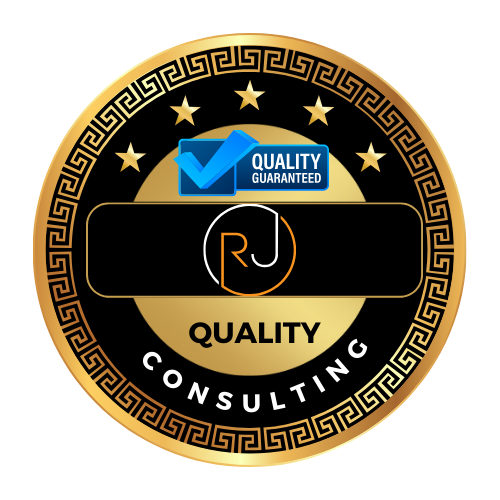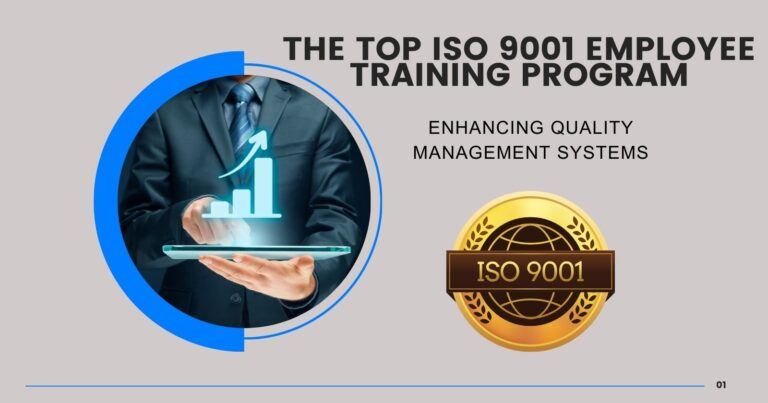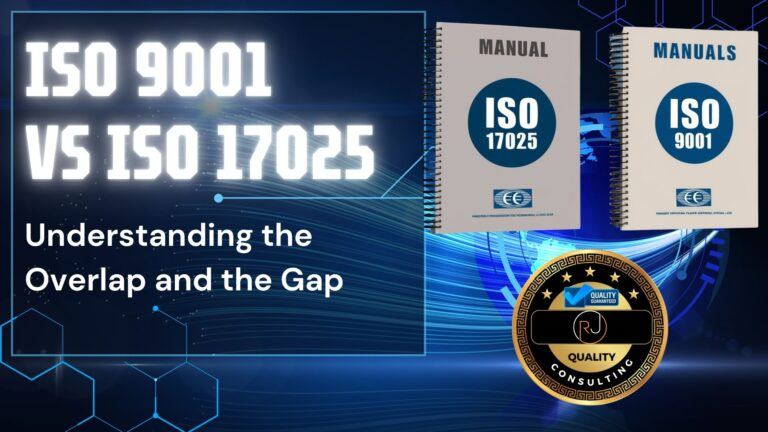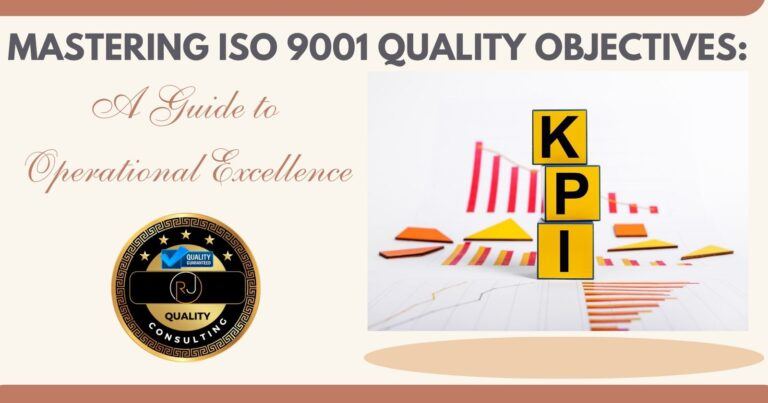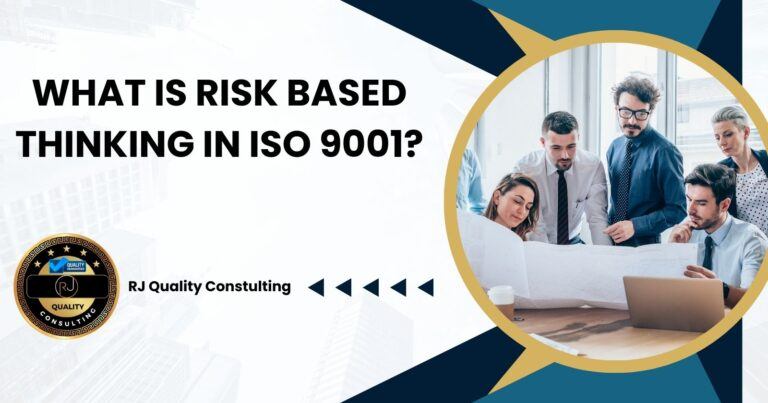ISO 9001 Quality Policy Examples: Crafting Effective Quality Statements
ISO 9001:2015 sets a global benchmark for quality management systems, indicating to customers that a company is committed to excellence. A well-crafted Quality Policy is a central tenet of this standard. The policy should articulate a clear intention to continuous improvement and customer satisfaction, tailored to the culture and context of the organization. In this ISO 9001 quality policy examples post, I will, not only give you a good example of a quality policy, but I will help you craft a good quality policy for your organization as well.
The ISO 9001 quality policy acts as a guiding star for the company’s operations, decision-making, and strategic planning. Adopting this Quality Policy, companies can ensure that it aligns with their quality objectives and with the standard’s emphasis on quality and then they can effectively communicate this to all stakeholders.

📘 ISO/IEC 17025 Quality Manual Template
Accelerate your lab’s accreditation process with our comprehensive Quality Manual Template, designed to align with ISO/IEC 17025:2017 standards.
- Fully editable and customizable to fit your laboratory’s needs.
- Includes all necessary procedures, forms, and policies.
- Structured to facilitate easy implementation and compliance.
- Developed by experts with extensive ISO/IEC 17025 experience.
Check Out Our Great Selection of ISO 9001 Online Training Courses
Looking to master ISO 9001:2015 or ensure top-notch training for your team? Explore our Online Courses here!
ISO 9001 Quality Policy Examples
Here is a generic ISO 9001 quality policy example that you can use to apply to your organization. You can simply replace your organizations name in the appropriate areas.
Here’s the first example of an ISO 9001:2015 compliant quality policy:
Quality Policy of [Your Company Name]
At [Your Company Name], we are dedicated to delivering exceptional quality in every aspect of our business. Our commitment to quality is driven by the following principles and values:
- Customer Focus: We commit to understanding our customers’ needs and expectations, striving to exceed them in every product and service we offer. Our goal is to build lasting relationships based on trust, value, and performance.
- Leadership: Our management team leads by example, fostering a culture of integrity, ethical behavior, and a commitment to quality. We ensure that our quality objectives are set, communicated, and understood at all levels of the organization.
- Engagement of People: We recognize that our employees are the heart of our quality. We are committed to their ongoing training, development, and involvement. By empowering our team, we foster a culture of innovation, collaboration, and continuous improvement.
- Process Approach: We understand that a well-defined process results in consistent and predictable outcomes. Our operations are designed to add value, increase efficiency, and ensure quality at every step of our processes.
- Improvement: Continuous improvement is the cornerstone of our quality policy. We are committed to regularly reviewing and enhancing our processes, products, and services to meet and exceed the evolving needs of our customers and the industry standards.
- Evidence-Based Decision Making: Our decisions are based on the analysis of data and information. This approach ensures that we are objective, focusing on what truly matters for quality enhancement.
- Relationship Management: We value our relationships with our partners, suppliers, and all other interested parties. We work closely with them to improve our processes and services continually.
Commitment to Compliance: [Your Company Name] is fully committed to complying with all applicable legal requirements, industry standards, and ISO 9001:2015 requirements. We are dedicated to maintaining a robust quality management system that supports our quality policy and objectives.
Our quality policy provides the framework for setting and reviewing quality objectives and includes a commitment to comply with requirements and continually improve the effectiveness of the quality management system. We ensure that this policy is available to relevant interested parties, as appropriate.
By adhering to these principles, we uphold our dedication to quality, continuous improvement, and customer satisfaction. This policy will be regularly reviewed in line with our strategic direction and commitment to excellence.
Note: The policy should be customized to reflect your organization’s unique processes, culture, and the specific products or services you offer. It’s important to ensure that the quality policy is communicated, understood, and applied within the organization, and that it is available to relevant interested parties.
Creating an effective Quality Policy demands a thorough understanding of the organization’s purpose, context, and strategic direction. Given the uniqueness of each company, every Quality Policy must be specific to an organization’s goals, customer requirements, and regulatory obligations. To realize the policy’s full potential, it should be clearly communicated and understood within the organization. By reviewing examples of quality policies, businesses can gain insights into how others have articulated their commitment to quality, which can be an invaluable aid in crafting their own statement.

Here’s another example of an ISO 9001:2015 compliant quality policy:
[Company Name]’s Commitment to Quality
At [Company Name], our commitment to quality and excellence is at the forefront of our operations. We pledge to consistently provide products and services that meet or exceed the expectations of our customers and stakeholders. Our dedication is rooted in:
- Continuous Improvement: We are committed to the relentless pursuit of excellence through ongoing improvement of our processes, products, and services.
- Customer Satisfaction: Ensuring the highest level of customer satisfaction is our priority. We listen to our customers, understand their needs, and deliver solutions that meet those needs.
- Compliance with Standards: Adhering to ISO 9001:2015 standards, legal requirements, and industry best practices is fundamental to our operations.
- Employee Engagement: We believe in empowering our employees, providing them with the ISO 9001 Courses Online and resources necessary to contribute to our quality objectives effectively.
- Quality Objectives: Setting, monitoring, and reviewing measurable quality objectives at relevant functions and levels within the organization.
- Partnerships: Building and maintaining strong relationships with our suppliers and partners to enhance the quality of our offerings.
This policy reflects our unwavering dedication to quality, customer satisfaction, and continuous improvement. It is communicated across our organization, ensuring that every team member understands and embraces our quality objectives.
This example incorporates key elements of ISO 9001:2015, including a focus on continuous improvement, customer satisfaction, compliance with standards, employee involvement, clear quality objectives, and effective partnerships. It should be tailored to fit the specific context and strategic direction of your organization.
Key Takeaways
- A Quality Policy encapsulates an organization’s commitment to quality and continuous improvement.
- It must be specific to the organization’s goals, respectful of customer needs, and compliant with ISO 9001:2015.
- Effective communication and understanding within the company are crucial for implementing the Quality Policy.
Understanding the ISO 9001:2015 Quality Policy

The ISO 9001:2015 standard demands that your organization’s Quality Policy be a clear reflection of your commitment to quality and improvement, aligning with the strategic direction and providing a framework for setting quality objectives.
Definition and Purpose
The Quality Policy is a formal statement from an organization that defines how it views quality and its dedication to excellence. For ISO 9001:2015, the Quality Policy is the core of the Quality Management System (QMS), setting the tone for the processes and procedures that ensure customer satisfaction and continuous improvement. It’s imperative that the policy is understood, implemented, and maintained at all levels of the organization.
Key Requirements
ISO 9001:2015 specifies several key requirements for the Quality Policy:
- Applicability: It must be relevant to the purpose and context of your organization and support its strategic direction.
- Commitment to satisfy applicable requirements: It should demonstrate your organization’s commitment to satisfy applicable statutory and regulatory requirements.
- Continual improvement: The policy must express a pledge to continual improvement of the QMS.
- Framework for setting quality objectives: It should provide a framework for setting and reviewing quality objectives.
- Communication: The policy needs to be communicated within the organization.
- Availability: It must be available to relevant interested parties, as appropriate.
- Periodic reviews: There should be a commitment to review the policy for ongoing suitability.
Alignment With Strategic Direction
Your Quality Policy should align with the strategic direction of your organization; this means it should not just be a static document but one that is actively reviewed and used in strategic planning. It serves to align your QMS with the business strategy, ensuring that quality objectives propel the business forward and reflect both your current capabilities and future aspirations.
Developing an Effective Quality Policy

The strength of your Quality Policy hinges on its ability to articulate the commitment to quality and the strategic direction of your organization. It’s a foundational element that sets the stage for your ISO 9001:2015 Quality Management System.
Writing a Quality Policy
Your Quality Policy should serve as a clear representation of your organization’s mission statement and commitment to quality. When writing your policy, it’s crucial to ensure that it is:
- Simple and Understandable: Use language that is to the point and easy for all employees to understand.
- Appropriate: The policy must align with the strategic direction of your organization and encompass the core objectives.
- Documented: As per ISO 9001:2015, the policy must be maintained as documented information.
- Reviewed: Regularly review the policy to ensure it remains relevant and effective.
When developing the policy, involve key processes and relevant interested parties to build a comprehensive document that speaks to every level of your organization.
Implementation and Maintenance
After crafting your Quality Policy, effective implementation requires careful planning. Here’s how you can go about it:
- Communication: Convey the Quality Policy at every level of your organization to ensure that employees understand and can contribute to its objectives.
- Training: Provide the necessary training to enable employees to participate in the implementation actively.
- Integration: Incorporate the Quality Policy within your organization’s processes to encourage a quality-centric approach in all activities.
Regularly monitor and review the Quality Policy and its effects on your operations. This continual improvement process underscores your commitment to ISO 9001:2015.
Accessibility to Parties
Ensuring that your Quality Policy is readily accessible to relevant interested parties is central to ISO 9001:2015. This might include:
- Posting: Display the policy in prominent locations throughout the workplace.
- Distribution: Share the policy with stakeholders through your website, official correspondence, or meetings.
- Engagement: Involve employees and stakeholders in discussions about the policy to fortify its understanding and relevance.
Your organization’s Quality Policy isn’t just a document. It’s a living declaration of your dedication to upholding and elevating quality standards.
Examples of Quality Policies

Crafting an ISO 9001 compliant quality policy is crucial for demonstrating your commitment to continual improvement and customer satisfaction. A well-defined quality policy acts as a guiding star for your organisation, communicating your core values and dedication to quality to both your team and stakeholders.
Sector-Specific Breakdown
- Manufacturing: In this sector, your quality policy should emphasize precision, adherence to safety standards, and product consistency. For instance, your manufacturing quality policy example might state, “Your Company is dedicated to fabricating products that meet or exceed our customers’ expectations. We commit to maintaining compliance with all applicable regulatory requirements and continually improving the effectiveness of our quality management system.”
- Service: For service-oriented entities, the focus shifts towards customer satisfaction and service delivery excellence. A service quality policy could express, “At Your Company, we strive to provide exceptional service that ensures client satisfaction. Our team is committed to continuously improving processes and maintaining an effective quality management system.”
- Healthcare: Quality policies in healthcare are patient-centric, often highlighting patient safety, confidentiality, and adherence to healthcare standards. A healthcare quality policy can declare, “Our healthcare facility pledges to deliver high-quality patient care by pursuing continuous quality improvements and upholding the stringent healthcare industry standards for safety and privacy.”
- Environmental: Environmental considerations are also a part of quality policies, especially for organizations seeking to integrate ISO 14001 with ISO 9001. Such a policy might articulate, “At Your Company, we are dedicated to not only meeting quality objectives but also to reducing our environmental footprint through sustainable practices and proactive environmental management systems.”
Analysis of ISO 9001 Quality Policy Examples
Examining these examples provides insight into how businesses align their quality policies with industry expectations and ISO 9001 requirements. Across different sectors, the trend is to:
- Specify the commitment to meet customer and regulatory standards.
- State the intention to engage in continuous improvement.
- Outline a commitment to the efficiency of the quality management system.
Each policy is tailored to reflect the unique processes, customer expectations, and regulatory demands of the sector it serves. It’s imperative for you to ensure your policy is not only reflective of these qualities but also communicated effectively to every member of your organization.
Best Practices for Communicating and Implementing the Quality Policy

Developing a robust Quality Policy is a foundational step for your organization’s alignment with ISO 9001:2015 standards. Effective communication and implementation are critical to fostering a culture of continuous improvement and ensuring a strong understanding of quality objectives across the organization.
Communication Strategies
Your Quality Policy must be articulated in a manner that is understandable and accessible to all stakeholders. Here are specific tactics:
- Clearly define who your customers are and what they need from you.
- Use various communication platforms, such as intranet postings, emails, and physical displays throughout the workplace.
- Ensure that the language is simple and that the policy is displayed in locations that are frequently visited by employees.
- The role of top management is key—they should actively communicate the Quality Policy to reinforce its importance.
Training and Engagement
To achieve continual improvement, everyone in the organization needs to be aware of and engaged with your Quality Policy. Specific actions include:
- Conduct regular training sessions to deepen employees’ understanding of the policy and its relevance to their roles.
- Utilize resources effectively to engage staff, such as interactive workshops or e-learning modules, that relate the policy to daily operations.
- It’s crucial for top management to lead by example, demonstrating commitment to the policy through actions and decisions.
Policy Review and Update
ISO 9001:2015 requires that your Quality Policy be monitored and reviewed regularly:
- Schedule periodic reviews to ensure the policy remains relevant to the context of the organization and its continuous improvement objectives.
- Updates should involve a cross-functional team, reflecting on the organization’s performance and setting measurable targets.
- Maintain a log of changes to track evolution and ensure the policy remains aligned with the strategic direction of the organization.
By following these best practices, you’ll ensure that your Quality Policy is not just a document, but a dynamic process that propels your organization towards excellence.
Conclusion

When crafting your ISO 9001:2015 Quality Policy, remember that it is a core element of your Quality Management System (QMS). Your commitment to quality should be transparent, fostering both customer satisfaction and continuous improvement. This policy serves not only as a promise to your customers but also guides your organization’s processes and sets a foundation for objectives aimed at improvement.
- Highlight Customer Satisfaction: Ensure that your Quality Policy reflects your dedication to meeting customer needs and exceeding expectations. Your customers are the center of your QMS.
- Embrace Continuous Improvement: Your Quality Policy should instill a proactive approach to consistently enhance all aspects of your QMS.
- Demonstrate Commitment: Visible and unequivocal commitment from management is pivotal. It influences the culture and performance of your organization.
- Align with ISO 9001:2015: Make certain your Quality Policy is aligned with the principles of ISO 9001:2015 to facilitate compliance and standardization across your operations.
Your Quality Policy is more than a document—it’s a roadmap that should be reflected in the daily practices of all team members. Regularly review and communicate your policy to ensure it remains effective and continues to support your organization’s strategic direction. Your effort to maintain a robust QMS will be evident through the continual enhancement of your goods, services, and customer experiences.

If you’re aiming to enhance your organization’s reputation for quality, ISO 9001 certification is a critical step. Here’s your guide to making this goal a reality:
- Draft Your Quality Policy: Initiate by crafting a quality policy that reflects your commitment to quality and continuous improvement. Keep it clear, concise, and aligned with your strategic objectives.
- Engage in Continuous Improvement: ISO 9001 isn’t just about having standards; it’s about consistently upholding and refining them. Engage your team in ongoing improvement activities to demonstrate this commitment.
- Seek Professional Guidance: Consider enlisting consulting services tailored for ISO 9001 to streamline your process. Experts can provide valuable insights, helping you avoid common pitfalls and ensuring your policy is effective.
- Plan for Certification: Certification is more than a badge—it’s a testament to your quality assurance. Prepare your organization for the certification process by using an effective ISO 9001 audit preparation checklist and then conducting internal audits and readiness reviews.
Next Steps:
- Develop Your Policy: Document your commitment to quality.
- Implement the Standards: Integrate quality into your daily operations.
- Audit and Improve: Regularly review your systems and processes.
- Train Your Team: Ensure everyone understands their role in quality management.
- Seek Certification: Once ready, pursue formal certification to solidify your market standing.
Embarking on the ISO 9001 journey signifies your dedication to excellence. Start transforming your quality management system today and unlock the benefits that follow a recognized standard of excellence. Your commitment can lead to enhanced customer satisfaction and a robust competitive edge.
Frequently Asked Questions

In this section, you’ll find answers to common inquiries about ISO 9001 Quality Policy and its implementation, ensuring your approach aligns with the standard’s objectives.
What are the critical components of an effective quality management system?
Your quality management system should be comprehensive, focusing on customer satisfaction, continual improvement, and adherence to statutory and regulatory requirements. It’s essential to have clear processes, trained personnel, and detailed documentation to measure and improve quality performance.
How can a company implement ISO 9001:2015 through its quality policy?
Implementation begins with crafting a quality policy that reflects your company’s commitment to quality and improvement. You should ensure this policy is communicated across all levels, setting measurable objectives to guide your organization’s operational procedures in line with ISO 9001:2015.
What distinguishes a strong quality policy statement for a manufacturing company?
A strong quality policy for a manufacturing company is tailored to its specific processes and customer expectations. It commits to regulatory compliance, high-quality outputs, and continuous enhancements, and is often backed by measurable targets and performance indicators.
Can you provide an example of a quality policy that aligns with ISO 9001:2015 objectives?
An example of a quality policy aligned with ISO 9001:2015 might state: “Our organization is dedicated to delivering exceptional service through a culture of continuous improvement and rigorous adherence to industry standards, ensuring customer satisfaction and operational excellence.”
What are the best practices for writing a comprehensive quality policy for a small business?
When writing a quality policy for a small business, focus on clarity and relevance. Reflect your commitment to meeting customer and regulatory requirements, outline your main objectives, and articulate the ways in which continual improvement is sought. Keep your policy concise and understandable to all employees.
Where can I find templates or samples to help me draft my organization’s quality policy?
Templates or samples for a quality policy can often be found in ISO 9001 guidance documents, from registrars like Orion Registrar Inc, or by consulting experts in quality management systems. These resources can provide a solid starting point to ensure your policy is comprehensive and compliant.
🕒 Book Your Free 45-Minute Consultation
Have questions about ISO/IEC 17025 or ISO 9001 implementation or accreditation? Schedule a free 45-minute consultation with me to discuss your Company or laboratory’s needs and how we can achieve compliance together.
Schedule Your Consultation